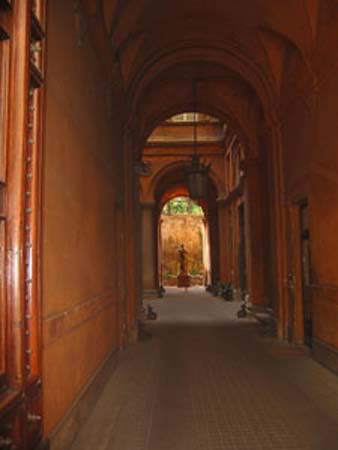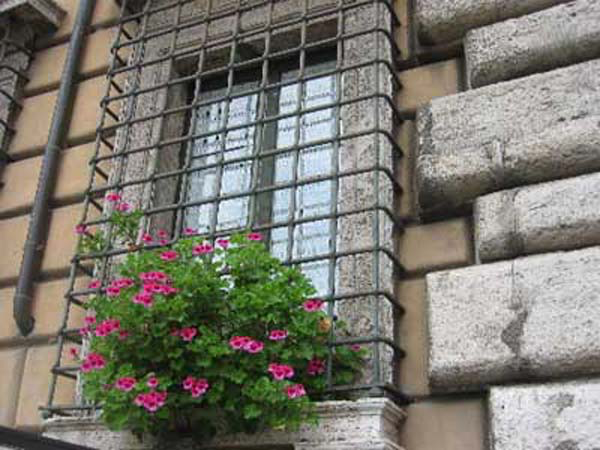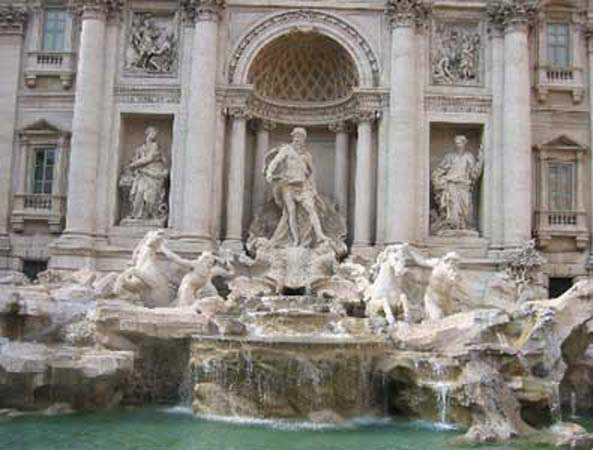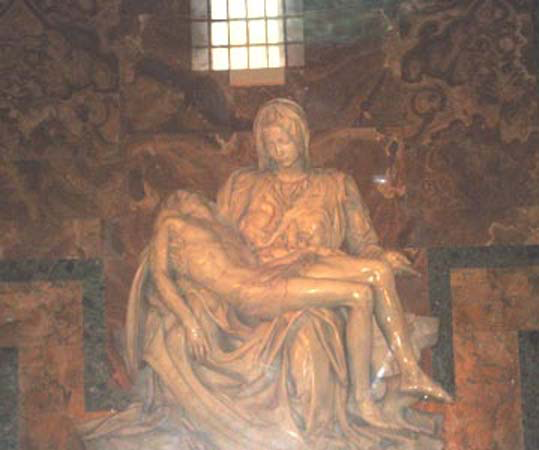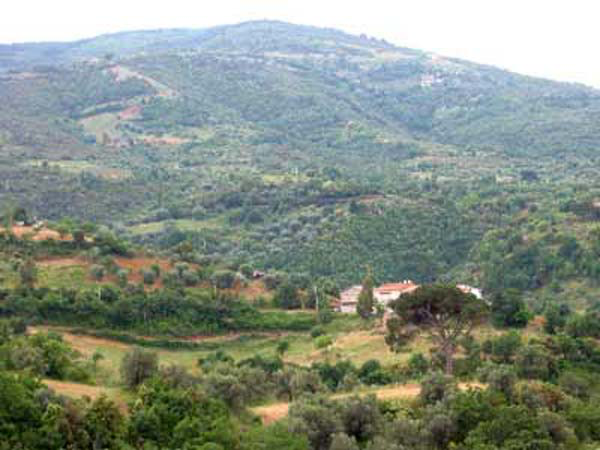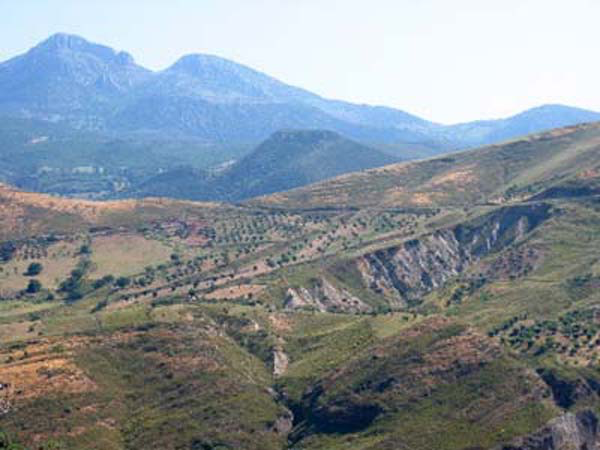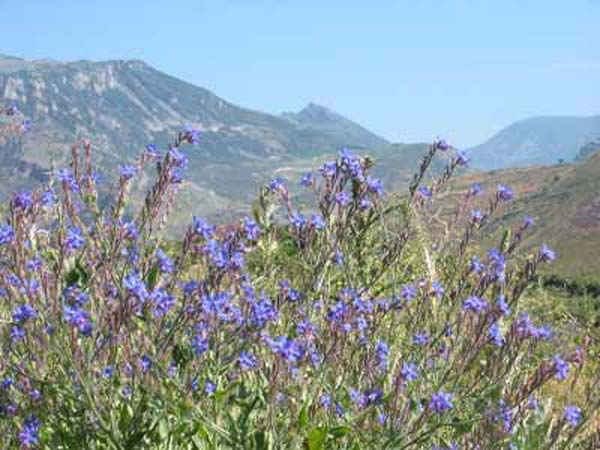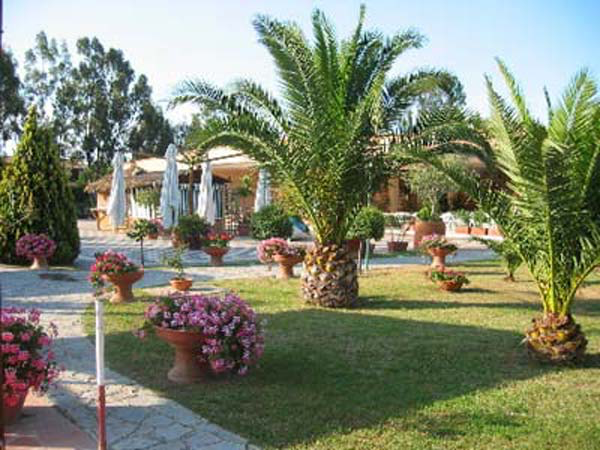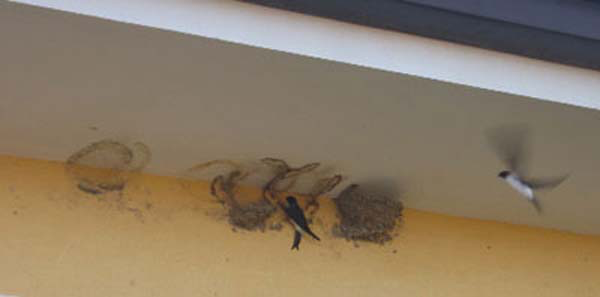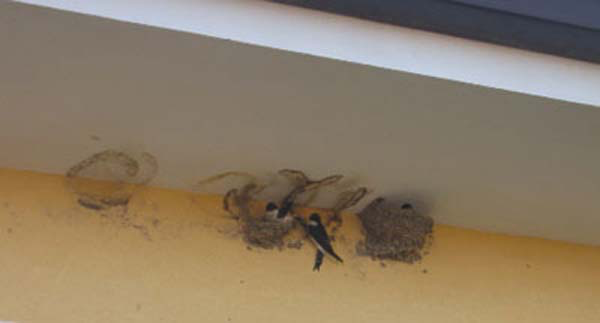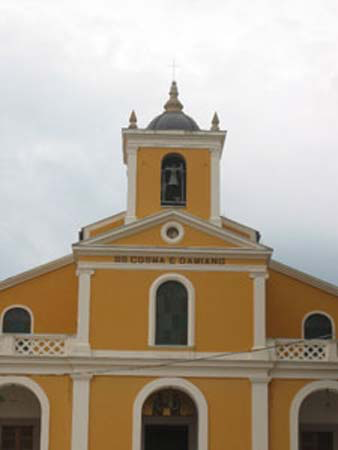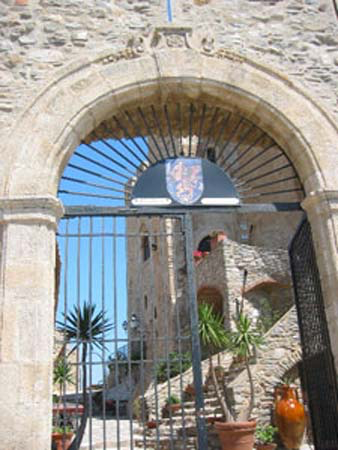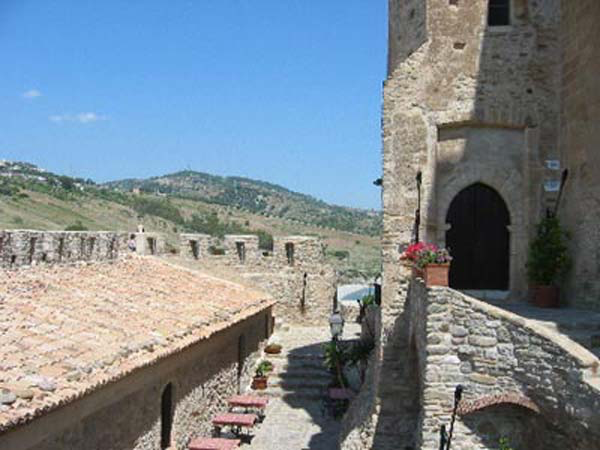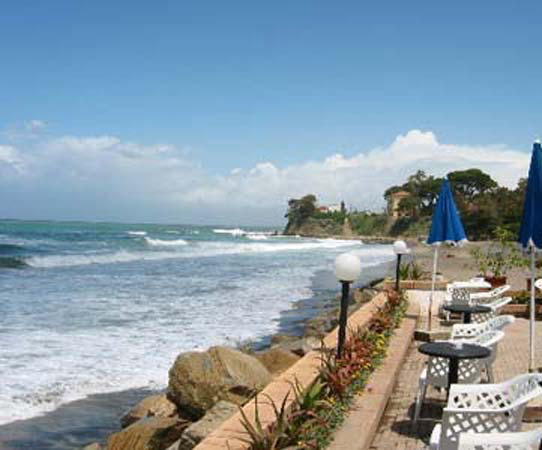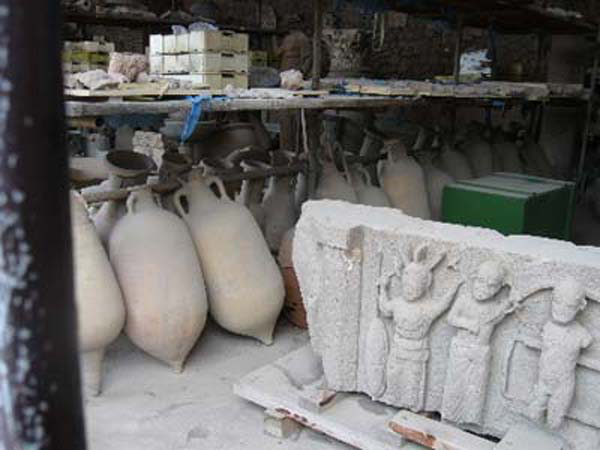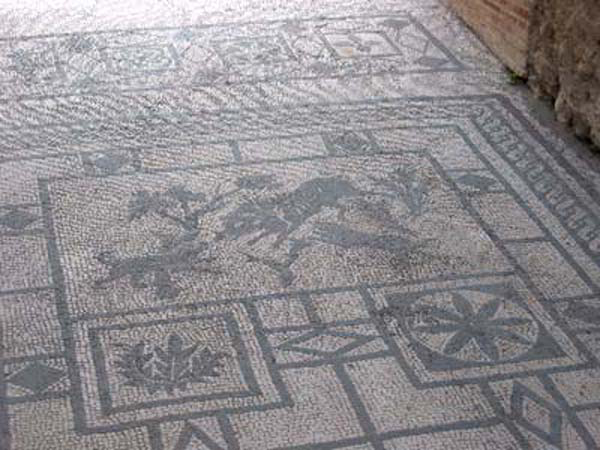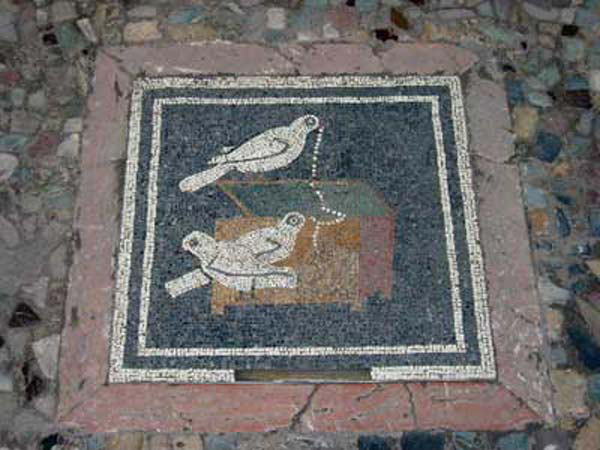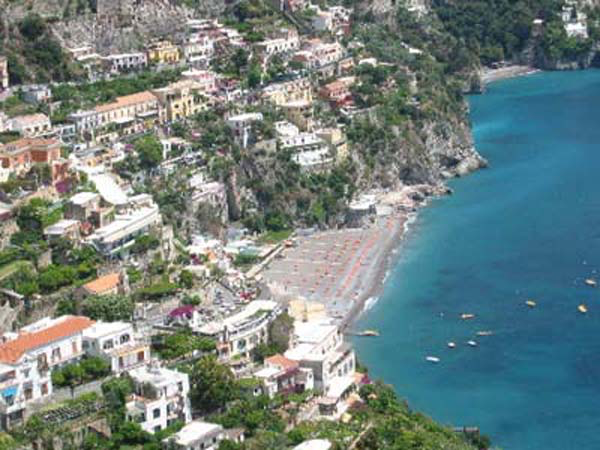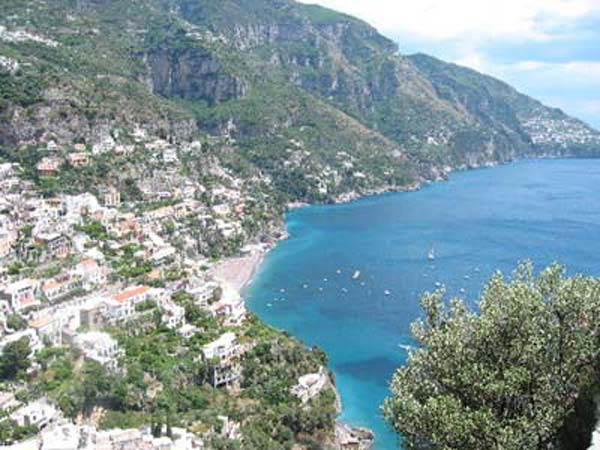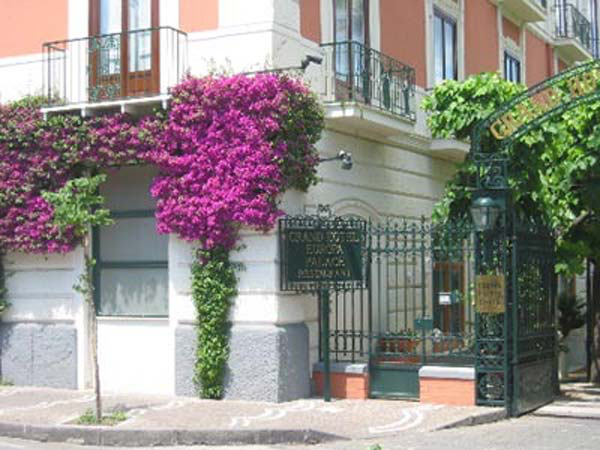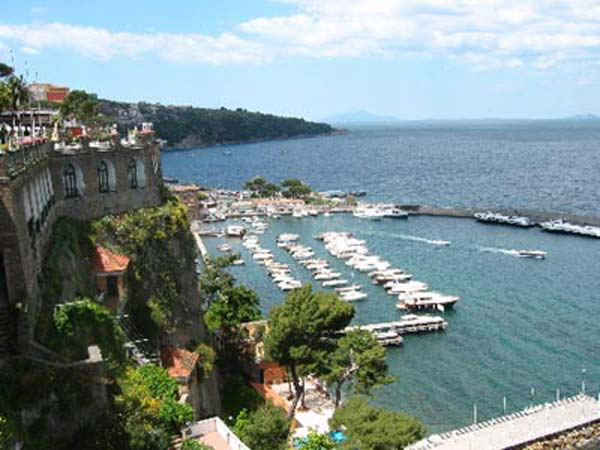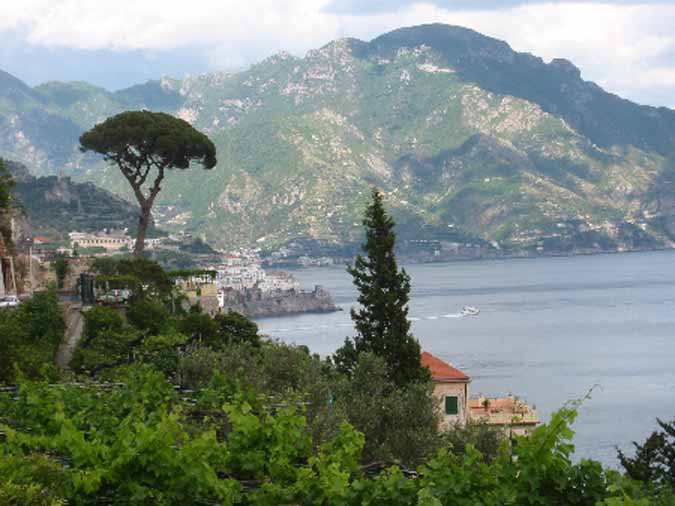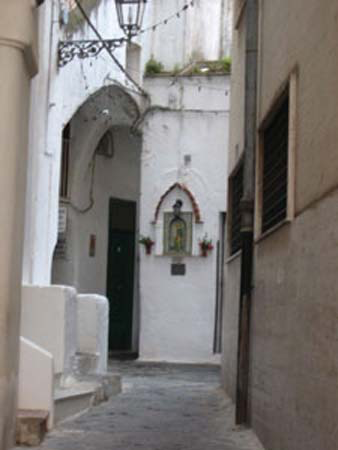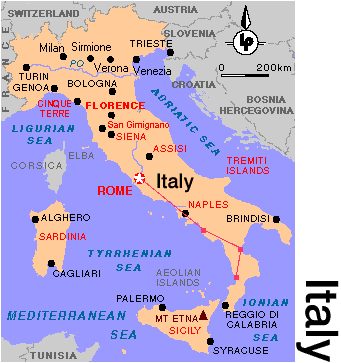
DAY ONE
Here I am embarking on a new adventure! A fam trip to Calabria and Campania. These two regions are in the tip of the boot that is Italy. We are a rather large group totaling 37 with the staff accompanying us. Strangely the group is very mixed as far as ages go; yet we all get along fine. Some are old timers to Italy others are neophytes but everyone seems eager to discover this part of the country.
We flew first to Nice, then to Rome where we landed around lunchtime. As this is not the target of our visit we only have a few hours there. My poor roommate manages to loose the group in the airport but is finally reunited with us. We go straight to the hotel to freshen up before heading for a walking visit. A galloping visit at that! Midway through we find out that one of the group fell asleep in her room and has just woken up. She hops on a taxi and finally catches up.
If I had chosen what to see I would have wanted to visit the Sistine chapel, as I have not seen it since it has been refreshed, but this was not to be. Instead, we walk along antique public baths, through piazzas, along winding streets, we visit churches, photograph fountains and sculptures, before reaching our ultimate stop, St Peter Basilica, just before closing time. It turns out to be a very interesting alternative. Everywhere you look you see beauty. There are no tall buildings in Rome so the view is never obstructed.
With the time difference and the sleepless night it is all a bit dizzying, especially crossing streets with cars, trucks and motorcycles zooming by, but we manage.
This is Rome to me: fountains, sculptures, beautiful architecture, motor scooters…
Our guide has a great admiration for Gianlorenzo Bernini (a sculptor/painter/architect who lived in the 1600s) so he takes us to see many of his works. One of which is the ecstasy of St Theresa de Avila in the San Maria de la Vittoria church. The other is the canopy over the high altar in St Peter Basilica.

We see some of the classics: such as the Trevi fountain and Michaelangelo’s Pieta
To complete this Roman experience the guide gives each of us a bus ticket. We all board the same bus, which is, unfortunately, already half full. We are packed pretty tight and more people keep getting on at each stop. I am pushed against a post and am maneuvering to get my bag out of the way when I feel a pair of hands circling my waist. I try to move but I am pinned to the post and can feel the man behind me pushing more and more rhythmically into my backside. I do not know what to say to make him stop. Every time I move, he follows. I slowly make my way towards the middle door. I did not dare get off as I have no idea where our hotel is and I do not want to end up alone on the sidewalk with him. But I pretend to want to get off and he follows. At the last minute I pivot and head towards the back of the bus. He gets off only to run to the back door and board again. But this time I am facing him so he looses interest and looks for another victim. Just as I breath a sigh of relief I feel an arm brush against mine and then a new pair of hands grab my ass…this feels like it will never end… but it does…eventually…we reached the terminal and hurried back to the hotel…It seems I was not the only one to have had that experience…
We leave Rome early the next morning en route for Lamezia, the Calabria airport.
DAY TWO
We fly down to Calabria where Antonio our guide meets us. A handsome man with a deep rich voice who regales us with stories and information about the towns we drive through on our way to Sibari. We find out more about him as days go by. He is very knowledgeable in history and a talented musician but he is also interested and curious about many topics, including politics and psychology. He is very attentive to the needs of the group, making sure everyone is happy.
These bus rides through the countryside are what I will remember most about Calabria. I expected a dry and bland scenery, instead I discover a luxuriant and varied vegetation set on the slopes of hills and mountains as well as nestled in narrow valleys. It is a patchwork of colours and textures. I also expected very hot temperatures, and am surprised to see snow atop some of the higher mountains. It is warm but far from hot.
This is olive country, so you see their round shape and silvery leaves everywhere.
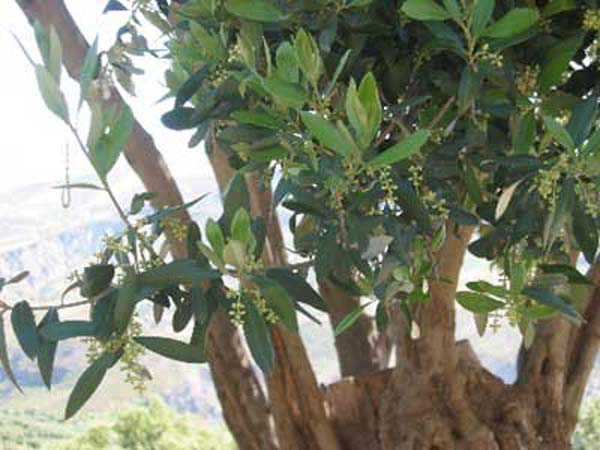
But the olive trees are usually surrounded by fruit trees like orange or Clementine (a variety of mandarin oranges) to protect them from the wind. You also see lots of vines and peaches. They grow 60 different varieties so that they can harvest fresh fruit over 6 months of the year. This area also grows a lot of fennel, lovely smell… Apart from all the shades of green there are bursts of red of fields of poppies.
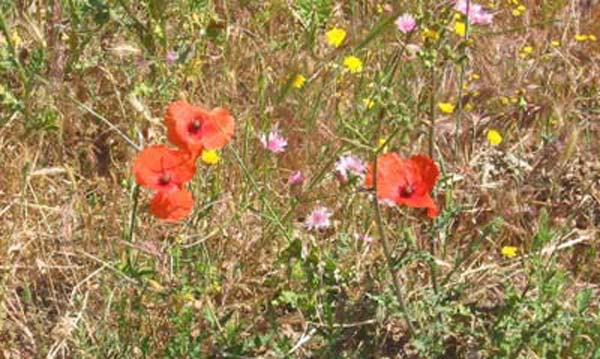
We finally arrive in Sibari. This is where the word … Sybarite … (a person who is very fond of luxury and comfort) comes from.
We settle in our resort. This is not a high-end resort. We are staying in little bungalows set among the gardens.
The pools are spectacular
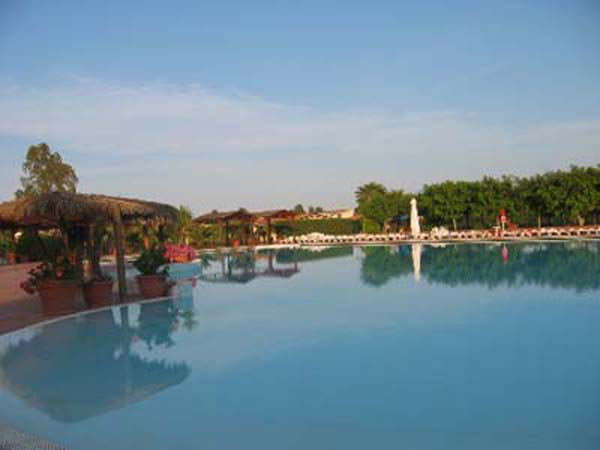
The setting is so pretty that you soon forget the army cots and the tiny bathroom. Before you ask, it is slightly larger than the cruise ship bathroom but the shower is surrounded by a curtain that sticks to you unless you push it away and flood the whole place.
I could not resist taking pictures of a family of Martins (?) (Hirondelles).
The village is about 1 kilometer from the beach. The road to get there is not very nice but the beach itself is wide and long and the water is clear.
DAY THREE
Today we set out to visit the Sibari museum. Antonio gives us a brief history of the city. The first known people to inhabit the area lived in the mountains. They feared the sea. The Greeks easily defeated them and built a flourishing city and port. They were merchants, their money was found as far away as Turkey. It was later invaded and destroyed by the neighboring village of Crotone. It was rebuilt under a different name. Later, yet another city was built over it. They even had ceramic pipes to carry the wine down to the port.
The museum holds artifacts from each period. There are funeral urns, jewelry, money, amphorae, stone carvings, and even stone bathtubs. Many of those objects were traced and returned from all over the world, even the USA.
Next we head for the village of Stighari (San Cosmo Albanese) where we visit an olive oil production and a charming Bizantine church. This village and its people, as the name indicates, are of Albanese origin.
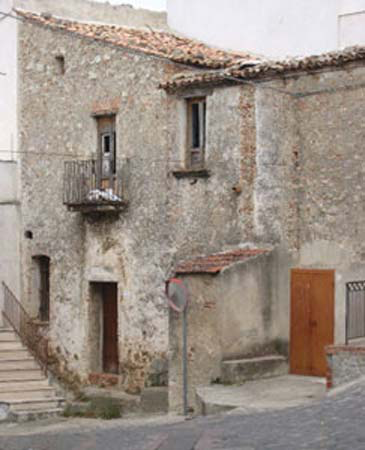
It is very picturesque and the people come out of their houses to talk with us.
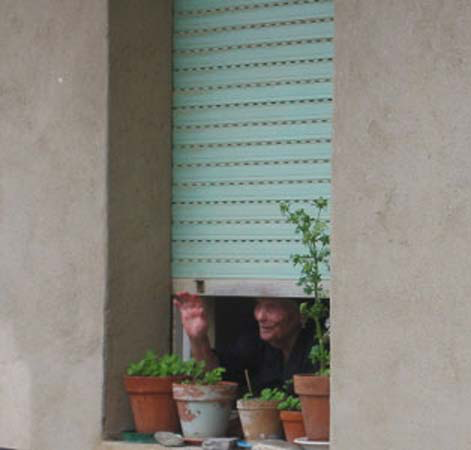
We are given some bread dipped in oil to taste. It is lovely.
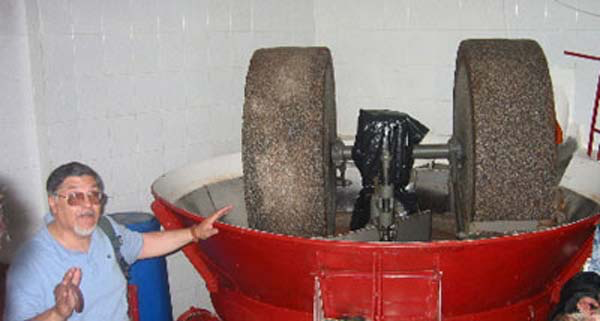
The church is very plain looking outside but very ornate inside with lots of gold mosaics. Each colour has a meaning: gold means sanctity, blue, faith, green, hope, and red, love. The church is named after San Damiano and san Cosmo who were respectively a pharmacist and a doctor.
Later we visit a winery – it is very strange to see all those stainless steel containers outside in the courtyard. I expected oak casks in a damp basement.
DAY FOUR
The next morning we set out to visit the caves at Cassano. They are Neolithic caves atop a mountain. There are stalactites and stalagmites of many sizes and colours. The view outside is breathtaking.
On the ride back we learn that the bishop San Eusebio of Cassano became pope in the Xth century and that the Lombards got their name because of their long beards and that the Normands were … men of the north …
On the way back we stop for some shopping of local arts and crafts … there is some pottery … and, as we find out once back on the bus … lots of little bugs too!
In the afternoon we set off for Roseto Capo Spulico. It is a fortress built on a cliff over looking the sea. It was used during the crusades as a place to fast and reflect before setting off for the Holy War.
It is quite a large building, with various reception rooms, one of which was used as a courtroom. It has recently been transformed into a restaurant and hotel.
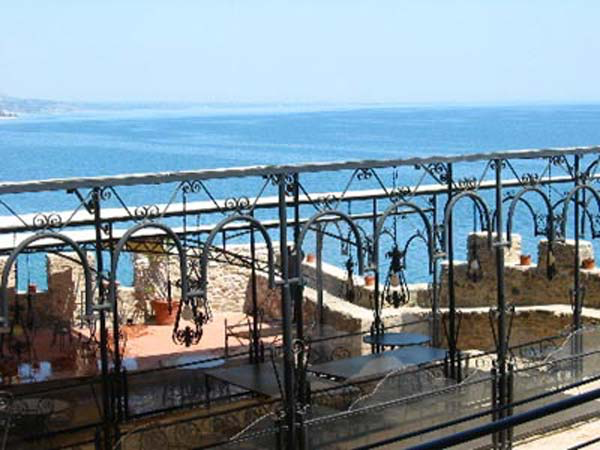
Rumor has it that during the renovations a large round object covered with mysterious inscriptions was discovered. Under the scrutiny of an X Ray machine, it was discovered that there is a metal object inside in the shape of a chalice or a stemmed goblet … but, as I said, it is just a rumor.
DAY FIVE
Today we set off very early to Agropoli on the west coast. Again a lovely ride. We stop at a roadside shop that sells local cheese.
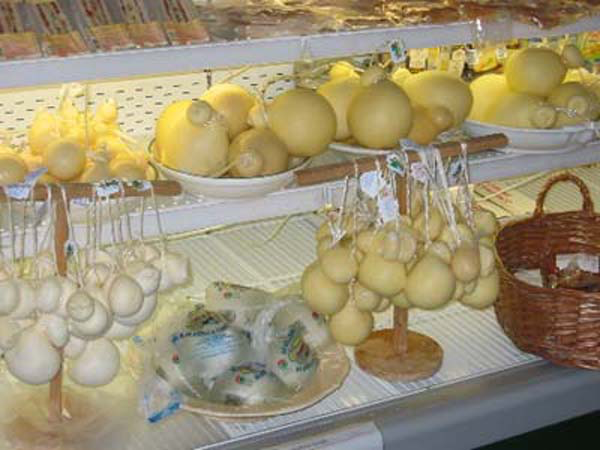
This is lemon country. We see huge lemons on trees everywhere. The local drink made out of lemons is called Limoncello. It is sold everywhere in bottles of all shapes and sizes.
The hotel we are staying at is directly on the beach…it is lovely, with terraces and balconies overlooking the sea…
After settling in we quickly leave for Pompeii. This to me, is the highlight of the trip. I have read on it and am very excited. The outside is like all tourist sites, filled with postcard vendors and junk stands.
I think the visit should start with the hangar where they store the urns and pieces of sculptures they have removed from the site along with a few plaster moldings. It would give the visitor a better idea of life in Pompeii before the Vesuvius erupted.
There had been an earthquake a few years before the eruption and the city was still busy rebuilding when it happened. Four meters of rock and ash fell upon the city blinding and suffocating its inhabitants. It was as if people were frozen in action. Some of the bodies, although decomposed had left their imprint in the debris so plaster casts were made of that.
What is striking about the site at first glance is the symmetry of the layout: large streets perfectly perpendicular, sidewalks everywhere, stepping stones to cross the streets without getting wet on rainy days. Public fountains at regular intervals.
The first archeological digs amounted to more looting than research. Luckily later searches were done more respectfully and are still being carried out. Most of the movable objects have been transported to the Naples museum so that what is left in Pompeii are mostly parts of buildings: walls, column, pools, stone benches, fountains…There are some lovely mosaics that are in good condition. One has a “Beware of the dog” message in it.
One of the things that is very publicized is the erotica found on the site. It is surprising that it “survived” when so many things did not. One wonders if it is because there was so much of it or if it is just coincidence. There are penises carved in the sidewalk to advertise the business carried inside the building, there are paintings on the walls depicting the various services available. Nothing changes I guess…

There are many bakeries with their grain mill and ovens. One even had 90 loaves of bread in the oven when the eruption happened.
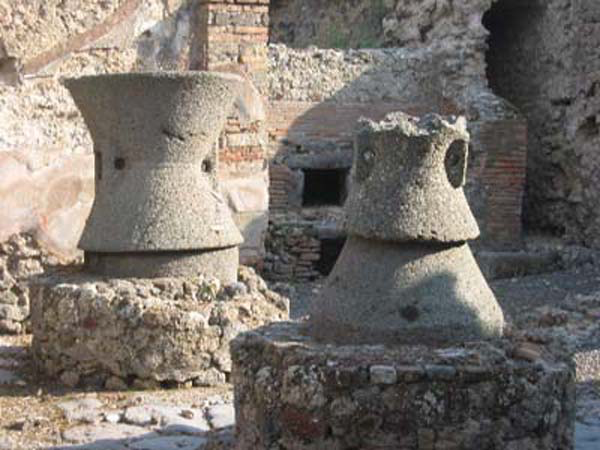
There are many private homes, most of them built according to the Roman model around a central atrium, with a shallow pool in the middle. Some are very luxurious.

Among the public buildings there are temples of course but also the publics baths. Those were a very important gathering place. People would spend hours there in the various rooms: steam room, cold room, poolroom, and gymnasium. They would gather there to talk, to attend lectures and of course to receive health and beauty treatments. Some of those rooms were preserved by the debris that filled them, thus preventing the roof from caving in. They were decorated with paintings, frescoes, fountains, and sculptures.
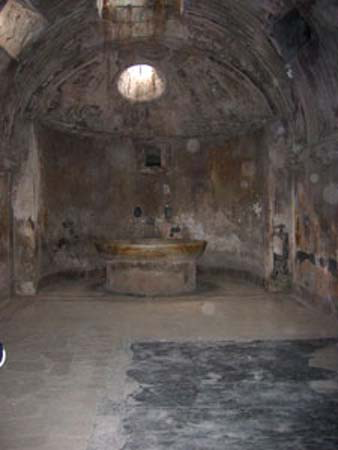
One amusing note: as much as the Forum in Rome is filled with cats, the ruins of Pompeii seem to be a heaven for dogs, they are everywhere…
This visit was too short. I would have liked to spend more time there. The feeling I got from this visit is troubling because it offers a glimpse of the everyday life of ordinary people rather than impersonal temples or churches
DAY SIX
Today we are in for a treat! We are going to ride the Amalfitan coast. This area is spectacular because the mountains are very abrupt and fall almost directly into the ocean. Villages seem to hang from cliffs. Flowers seem to grow out of rocks. The road is like a shoelace, winding its way around each hill.
We start the tour at Sorrento. This is a lovely town with many shops and gorgeous hotels. We cannot resist and go in to visit one. The lobby is all dark wood and glass. Each room has a different colour scheme. The terrace out back has the most incredible view. We even rode the elevator down to the beach below.
Next stop is Positano. We cannot enter the town with our Pullman bus, the streets are so narrow. So we must content ourselves with taking photographs from a look out point. There is a colourful fruit stand by the road.
We stop for lunch in Amalfi. The owner has prepared a feast. It is hard to decide what is best the view or the food. We start with some fish dumplings, followed by mussels, then fresh anchovies in a lemon sauce. We are then offered a dish of seafood pasta with huge olives in it, followed by a salad to cleanse the palate. THEN comes the main course: a plate of varied seafood, octopus, scampis, shrimp, fish…We had unknowingly requested seconds of the three first dishes, needless to say we are beginning to feel a bit full by now. But the dessert looks so good that we dig in. It is lemon based and delicious. By now we think we are hallucinating when the owner rolls in a table carrying glasses and bottles of liqueur: we have a choice of melon, coconut or licorice. We try all three and they are equally nice.
We walk through the town to digest a bit. It is all stairs and narrow streets. There is a central plaza with a striking church and lots and lots of shops…
Back at the hotel we are serenaded during supper as we watch the sun set over the ocean one last time. We feel the need to apologize to the cook for our lack of appetite.
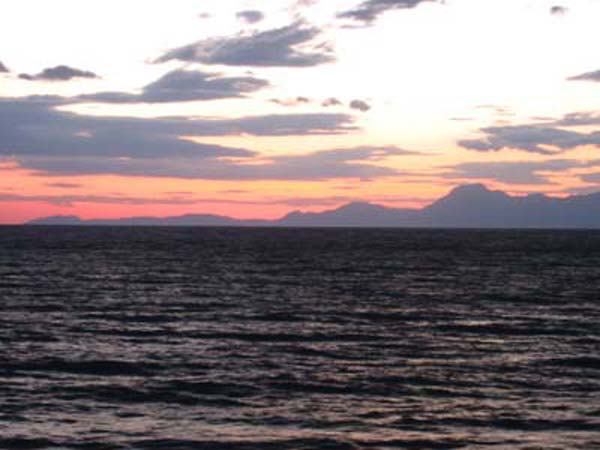
THE RETURN HOME
The return home is a marathon.
We are awakened at 4 AM, breakfast is at 4:30 departure by bus for Rome at 5.
The bus ride from Agropoli to Rome is 4 hours.
Once in the airport we find out that the seat selections we had made before departure have been ignored.
We have a 2 hour wait before boarding.
Then a one hour flight to Nice followed by a two hour wait inside the plane while they embark more passengers.
The flight to Montreal takes 8 hours.
I am seated in the middle seat between two long legged men who sit spread eagle…my butt is numb, my legs hurt, my feet swell and the plane is filled with teen agers returning home after some kind of student exchange…it is not a quiet flight!
Yet I would not trade my place with anyone…I love to travel, I loved this trip
Looking forward to the next one!

